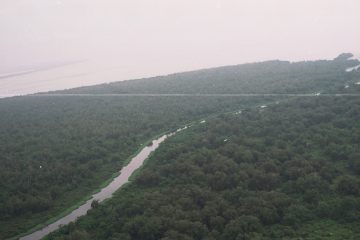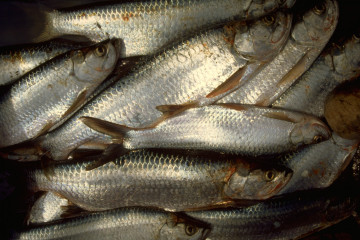The Ciénaga Grande de Santa Marta is the largest estuary in the Colombian Caribbean and serves as a nursery ground for many fishes and invertebrates. The larval influx of fishes, shrimps, and crabs into the estuary was monitored using moored channel nets placed at the mouth of the estuary during full and new moon periods from February 1998 through February 1999. The most abundant families of fish larvae were engraulids, gobiids, elopids, megalopids, gerreids, and sciaenids. Engraulid larvae were most abundant in February 1998, while the other families peaked in May-July during the rainy season. Influx of fish larvae was correlated with alongshore wind stress and with discharges from the Magdalena River. Megalopae of the crab Callinectes spp. and postlarvae of the penaeid shrimps Xiphopenaeus kroyeri and Farfantepenaeus spp. were dominant among the crustaceans. Megalopae and postlarval shrimps had recruitment peaks in February 1998, August 1998, and January 1999 (during periods of intense northeast wind and associated coastal upwelling). Influx of megalopae and postlarval shrimps was correlated with sea surface temperature and with cross-shelf wind stress. Influx of most fish larvae was higher during the new moon, but only cynoglossids showed significant differences. Farfantepenaeus spp. postlarvae were significantly more abundant during the full moon.




